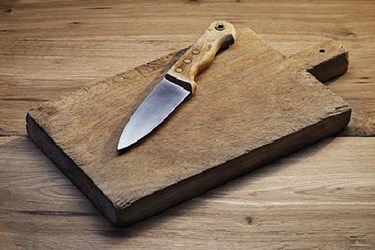Automated Knife Cleaning Increases Efficiency And Improves Hygiene
By Isaac Fletcher, contributing writer, Food Online

Automation of the knife cleaning process channels time of skilled workers to more profitable tasks, helping manufacturers’ bottom lines while still meeting hygienic quality standards
A new industrial knife cleaning machine has been introduced by Carometec, a manufacturer of sanitation equipment. The machine functions by using a pilgrim-step process in which a series of repeating water jets wash down and sanitize knives that are securely held in place. The nozzles rotate around the blade, ensuring that the knives are cleaned to meet sanitary standards and prevent foodborne illnesses. The rotating nozzles also provide the benefit of reaching hard-to-reach or hard-to-clean areas. The machine offers the extra functionality of cleaning safety gloves, allowing for time and money to be saved through the elimination of additional cleaning processes.
The Guide To Critical Cleaning
Automating the cleaning process with machines such as this means skilled workers hired to use the knives are not involved in the cleaning process. The result is time not being spent on tasks that do not directly provide a return to the manufacturer. Customization of this system, and ones like it, allows for more plant efficiency, as manufacturers can implement the system to fit specific needs and operational layout.
Advancements in food processing almost invariably hinge upon automation and customization. Increases in efficiency are most often found through cutting costs, reducing time spent, and increasing output. The automation of certain repetitive processes can achieve just that. If less time is spent on tedious tasks by workers, they are able to produce more output. More output over a given work period yields a better return for the manufacturer.
How A Process Control System Can Help Increase Profits
As with most properly-implemented automation systems, automation of the knife and glove cleaning processes will provide increased efficiency and cost savings. As the manufacturer’s bottom line is positively impacted, the benefits can be passed on to the customer of the final product. A less expensive, higher quality, end product will have a competitive edge over products of comparable quality that may cost a little more. Manufacturers across almost all industries stand to gain from automated processes. Though the initial investment may often be large, the return over time will likely outweigh the cost. The knife cleaning machine is an excellent example of a menial task being replaced by automation, resulting in more efficient and more profitable plant operations.
